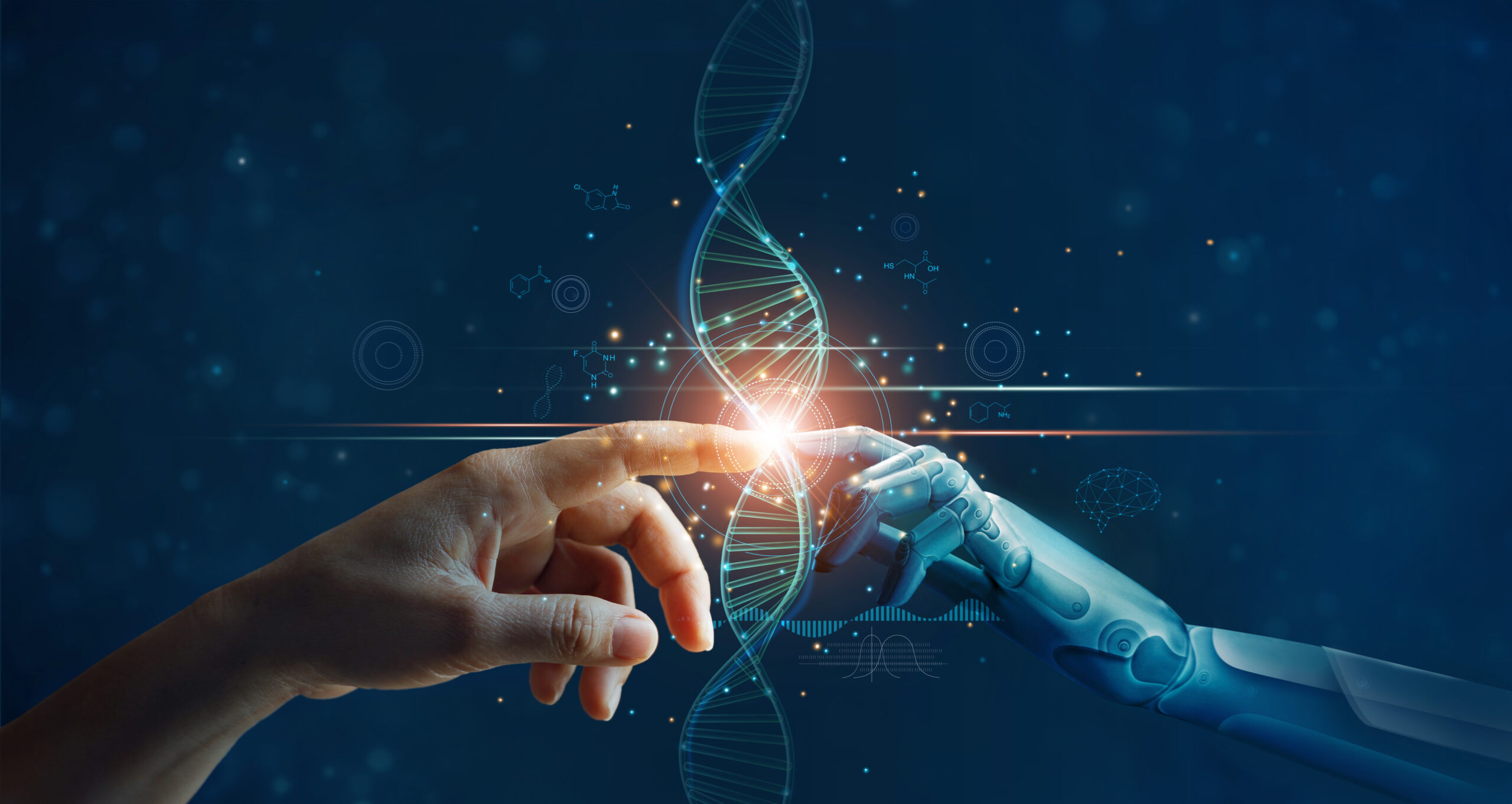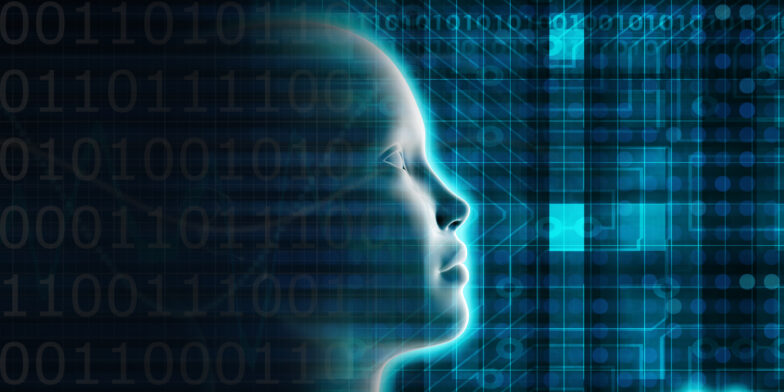Artificial Intelligence: The Seventh Warfare Myth about Science and Faith?
You have probably experienced some amazing things achieved by artificial intelligence (AI). You use your fingerprint to log into your smartphone, and you speak to command your smart home. But have you ever imagined what AI will accomplish in the future? Or wondered if AI will replace humans?
I am thankful for having spent my career in AI, initially as a graduate student, and subsequently as a research scientist, professor, and entrepreneur. I am also grateful to have stimulating discussions today with the youngest generation of researchers and engineers about their coolest AI. There are no doubts in my mind that AI will continue to improve, and I look forward to hearing about more breakthroughs that will improve our lives.
However, some imaginations about the future of AI are troubling, especially those raising theological questions. Does AI prove the nonexistence of God? Will AI empower humans to become gods? Can God survive AI? According to Professor Michael Keas, who specializes in the history of science, AI has become a futuristic myth to add fuel to the alleged warfare between science and religion.1 This short article responds to these theological AI claims from a research perspective. It discusses how this future-oriented myth relates to a bigger framework of past-oriented myths on the so-called conflict between science and faith. First, let’s look at some theological AI claims.
ET-Enlightenment
Supporters of the ET-Enlightenment speculation claim that extraterrestrial life (ET) will be equipped with super-AI. Their idea is based on these assumptions:
- Life on Earth emerged through Darwinian unguided evolutionary processes.
- Advanced life must have emerged in the universe through some similar evolutionary process.
- Since human technology is too primitive to detect ET, we will be found by ET with superior AI.
Assuming that unproven Darwinian evolution is true, nontheists extrapolate that superintelligent ET will come to Earth one day, bringing a superior spirituality from the heavens without God.
Artificial General Intelligence
With the recent AI successes, there is optimism that a general form of AI, or AGI, will soon surpass human intelligence. These optimists speculate that robots will replace humans, a new form of life will be birthed, and science will destroy religions. Some even imagine that AGI will function as gods.
Upgrading Humans
Extreme AGI optimism propels imaginations even further. Such optimists think that physical death has been reduced to a mere technical problem waiting for a technical solution. Some even imagine that AGI will upgrade humans into gods or that transhumanism will merge humans with machines, thus remaking humans in the image of their own higher ideals.
Realistic View of AI
As a teenager, I was inspired by science fiction, which led me to AI. From my perspective, science fiction (or sci-fi) is stimulating and inspiring. It may even shape the future of scientific research. However, some of these theological AI scenarios are not in the genre of sci-fi, or are perhaps hidden under the guise of sci-fi. There seems to be a common objective of putting science in direct conflict with religion.
How much scientific evidence is there behind these speculations? Renowned hands-on researchers call these speculations absurd and science fiction. Professor John Lennox observes that the amount of unjustified speculation claimed for AI is inversely proportional to the amount of actual hands-on work in AI that the claimant has done.2 I tend to agree. An experienced hands-on scientist would know that AI today is merely extracting salient patterns from a huge dataset.
While Darwinian evolution from a common ancestor is still an unproven concept, the idea that future superintelligent ET bringing superior spirituality appears to be purely speculative. The passion for developing AGI to surpass human intelligence has been in existence since the birth of AI over a half-century ago. However, scientists today still have no idea how to define some of the basic features of human intelligence, such as self-consciousness, humor, and love. There is still a major chasm between today’s AI and a primitive form of AGI, let alone of replacing humans, conquering death, or becoming gods. Ironically, in the process of denouncing theology, these scientific ideas are becoming a theology themselves.
Six Science-Faith Warfare Myths
Historians of science explain that there was little or no conflict between science and faith for many centuries since antiquity.3,4 Yet this futuristic AI myth that portrays conflict is not exactly new. Over the last several centuries, the proliferation of past-oriented science myths has obscured and distorted the facts, resulting in a complex relationship between science and faith. Here are six major science-faith myths that have made their way into textbooks and popular culture.
Big Myth
The big myth describes a premodern belief that the universe was small. Modern science displaced this church-sanctioned belief with a vast cosmos. However, this description is false because premodern people believed that the universe was very big. Ptolemy taught two thousand years ago that the earth had the ratio of a point to the heavens. Biblical authors used the greatness of the universe to illustrate the glory of the almighty God (Psalm 19:1, 103:11).
Dark Myth
The dark myth describes the church suppressing the growth of science, causing Europe to descend into the Dark Ages between 500 AD and 1500 AD. However, this story is false. Beginning in the fourth or fifth century, church leaders encouraged the integration of science and faith and wrote that the study of science was a form of worship. Furthermore, the church financially and socially supported the invention of the university, thus stimulating the growth of science. Beginning in Bologna in 1088, over 50 universities were established in Europe by 1450. About 30% of the liberal arts curriculum was on science-related subjects.5
Flat Myth
The flat myth is a subset of the dark myth, specifically used to demonstrate: (a) the ignorance of the church, and (b) its suppression of intellectuals who challenged belief in a flat earth until Christopher Columbus proved Earth’s roundness in 1492. However, this story is untrue. Ancient and medieval scholars had many evidence-based reasons to believe in Earth’s roundness.
Bruno Myth
This myth posits that Bruno was burned alive as a martyr of science in Rome in 1600. While this form of punishment in history was cruel, historians clarify that: (a) Bruno was a philosopher with a very faulty understanding of science at the time, (b) his trial was much more philosophy versus religion than science versus religion,6 and (c) he was executed almost entirely for theological reasons, not scientific ones. About a third of astronomy textbooks today tell this highly misleading myth.7
Galileo Myth
This myth holds that the church tortured and imprisoned Galileo in 1633 for constructing his telescope and for his idea of Earth going around the Sun. However, according to historians, Galileo received great honor and respect from the church before and during his trial. Nevertheless, Galileo betrayed the pope, denied receiving a special injunction, and even lied about the aim of his book. Though the church finally disclosed documents to the public in the nineteenth century, this myth has been in textbooks for centuries.
Copernican Demotion Myth
As canonized in the Catholic Church, Copernicus agreed that God formed the cosmos for humanity’s sake, affirming the harmony of the Bible with astronomy. Published in 1543, his book argued for Earth going around the Sun, thereby providing the basis for Newton’s work a century later. However, beginning in the seventeenth century as part of an anti-Christian effort, Copernicus’s astronomy was falsely portrayed as demoting humans. According to Keas’s survey, over 70% of astronomy textbooks today continue with this Copernican demotion myth.
Toward a Science-Faith Harmony
Science and Christianity ought to be in harmony with each other. However, myths fabricated over the past several centuries depict them as being perpetually at odds. These myths are still being used today to position Christianity as irrational and at odds with science. Having spent my entire career on AI mostly as a non-Christian, I am shocked that AI is being hijacked to become the seventh warfare myth between science and faith.
Our creativity in making AI work so amazingly reflects that we are made in God’s image. We should thank God for giving us the wisdom to develop AI to improve our lives.
Endnotes
- Michael Newton Keas, Unbelievable: 7 Myths about the History and Future of Science and Religion (Wilmington, DE: Intercollegiate Studies Institute, 2019).
- John Lennox, 2084: Artificial Intelligence and the Future of Humanity (Grand Rapids, MI: Zondervan Reflective, 2020).
- Keas, Unbelievable.
- Gary B. Ferngren, Science and Religion: A Historical Introduction, 2nd ed. (Baltimore, MD: Johns Hopkins University Press, 2017).
- Keas, Unbelievable.
- Maurice A. Finocchiaro, “Philosophy Versus Religion and Science Versus Religion: The Trials of Bruno and Galileo,” in Giordano Bruno: Philosopher of the Renaissance, 1st ed., edited by Hilary Gatti (New York, NY: Routledge, 2017).
- Keas, Unbelievable.






